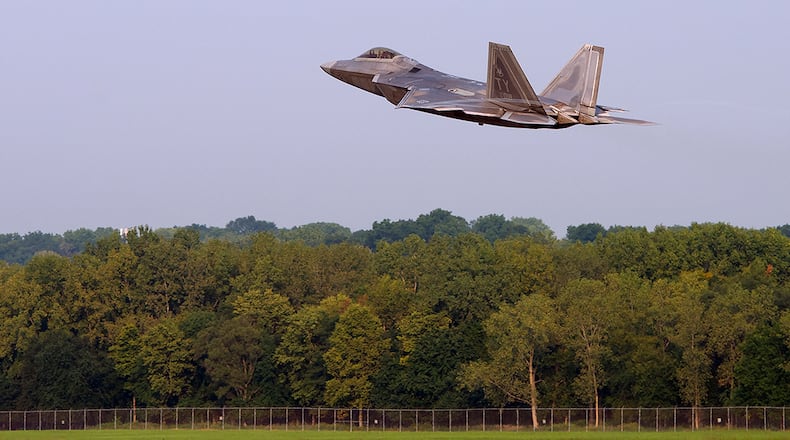Last September, the Air Force said it had completed the transfer of the F-22 program from Wright Patterson to Hill Air Force Base in Utah. This transfer was “best suited to the life cycle of the F-22 program at this time,” the Air Force said then.
“There is going to be a lot of work for employees on the base,” Mark Cancian, senior adviser for the International Security Program at the Center for Strategic and International Studies (CSIS), told the Dayton Daily News. “It might not be exactly the same kind of work that they have been doing.”
Air Force leaders expect to see “the sunset of the F-22 … in about the 2030-ish timeframe,” Lt. Gen. S. Clinton Hinote said in a recent interview with Air Force Magazine.
“That won’t be the full retirement of the type, but the beginning of its phase-out,” the three-star general said.
Loren Thompson, chief operating officer of the Arlington, Va.-based Lexington Institute, said that while Air Force leaders consider the kinds and number of fighters needed, there will be plenty for Wright-Patterson employees, uniformed and civilian, to do and oversee.
“The impact of retiring the F-22 fighter on Wright-Patterson would be negligible,” Thompson said. “The Air Force is on track to buy 1,763 F-35 fighters — and the support of those fighters will be managed out of Wright-Patt.”
The F-35 is “as stealthy” as the F-22, he added. “Because there are so many, there are economies in maintaining it (the F-35) that you can’t get with a small F-22 fleet.”
Plans to move the F-35 management office to Wright-Patterson from Virginia go forward. The office is set to be fully established by fiscal year 2022.
The F-22 system program director position and product support manager positions continue to report to the Air Force Life Cycle Management Center (AFLCMC) program executive office for fighters and advanced aircraft at Wright-Patterson, the Air Force said last year.
Meanwhile, the Air Force Research Laboratory and AFLCMC, based at Wright-Patterson, are leading Air Force efforts to research and refine autonomous aircraft.
Late last month, a team guiding the Air Force’s Skyborg project conducted a 2 hour, 10 minute flight test of the Skyborg autonomy core system aboard a Kratos UTAP-22 tactical unmanned vehicle over Florida. The test showed that artificial intelligence could handle basic flight commands.
“It is the first step in a marathon of progressive growth for Skyborg technology,” said Brig. Gen. Dale White, program executive officer for fighters and advanced aircraft at AFLCMC.
A Heritage Foundation count last year tallied 186 F-22As in the military’s “total aircraft inventory,” with 28 as dedicated trainers, and 16 used to test new equipment.
In a recent paper on defense budget priorities, Cancian and other CSIS analysts wrote that one issue is whether the Department of Defense will cut its planned quantity of aircraft in fiscal year 2022 and whether Congress will keep adding aircraft beyond what the Pentagon requests.
“An internal DoD memo on FY 2022 budget priorities indicates that decisions on the F-35 program are likely to be linked to broader decisions about aircraft modernization, retiring legacy aircraft and the ability to accelerate remotely crewed and autonomous systems,” the authors wrote.
About the Author


